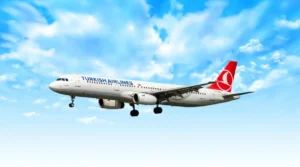Canada’s Aviation Giants: A Tale of Skyward Soaring
Canada’s aviation landscape boasts bustling hubs that connect millions of travelers to diverse destinations. In this article, we delve into the top five busiest airports, each offering its own unique blend of connectivity and charm. From the resilient spirit of Edmonton to the cosmopolitan allure of Toronto, these airports serve as vital arteries of Canada’s air travel network, facilitating journeys and fostering connections across the globe.

In the vast expanse of North America, Canada stands as a testament to aviation prowess, boasting some of the continent’s busiest aerial gateways. A mosaic of bustling terminals on both the eastern and western fronts welcome tens of millions of travelers annually, showcasing the nation’s fervor for air travel. Let’s take a high-flying excursion through the top five aerial colossi of Canada, as per the 2023 passenger traffic data curated by WorldData.info.
Edmonton International Airport (YEG):

Nestled in the heart of Alberta’s urban landscape, Edmonton International Airport, affectionately known as YEG, has long been a linchpin of Canada’s aviation network. Weathering the turbulent winds of the pandemic storm, YEG witnessed a modest resurgence in recent years, with an eclectic mix of local hops to international odysseys. Serving as a pivotal hub for Flair and a focal point for WestJet, YEG’s trajectory exemplifies resilience in the face of adversity.
Calgary International Airport (YYC):

Perched a stone’s throw away from downtown Calgary, YYC emerges as Alberta’s aviation juggernaut, orchestrating a symphony of inbound and outbound traffic. Fuelled by WestJet’s expansive footprint, YYC serves as a conduit to American and European metropolises, weaving a tapestry of connections spanning continents. From the majestic peaks of Denver to the ancient allure of Rome, YYC stands as a beacon of connectivity in the Canadian skies.
Montreal-Trudeau International Airport (YUL):

Bearing the mantle of Quebec’s premier aviation hub, Montreal-Trudeau International Airport, or YUL, reclaimed its throne amidst a meteoric surge in passenger numbers. With a resurgence exceeding 32%, YUL’s ascent signifies a triumph of revival and resilience. Anchored by Air Canada’s strategic forays into international skies, YUL embraces its French heritage, fostering connections with a myriad of Francophone destinations from Parisian splendor to the vibrant streets of Casablanca.
Vancouver International Airport (YVR):

On Canada’s majestic Pacific coast lies Vancouver International Airport, a gateway to the wonders of the Asia-Pacific region and beyond. Amidst the rugged beauty of British Columbia, YVR stands as a testament to innovation and connectivity. With an impressive roster of international carriers and a steady influx of travelers, Vancouver embodies the spirit of exploration. From the neon-lit streets of Tokyo to the serene shores of Shanghai, YVR opens doors to a world of possibilities.
Toronto-Pearson International Airport (YYZ):

In the heart of Canada’s largest city lies Toronto-Pearson International Airport, a bustling hub of activity and innovation. As Canada’s primary gateway to the world, YYZ welcomes travelers from all corners of the globe with open arms. From the bustling streets of New York City to the historic landmarks of London, YYZ connects travelers to an endless array of destinations. With its strategic location and unparalleled connectivity, Toronto-Pearson continues to soar to new heights, embodying the spirit of Canadian hospitality and ambition.
As we marvel at the vastness of Canada’s skies and the bustling activity of its airports, one thing remains clear: whether embarking on a journey of discovery or returning home, Canada’s airports stand as beacons of connectivity, bringing the world closer together, one flight at a time.











